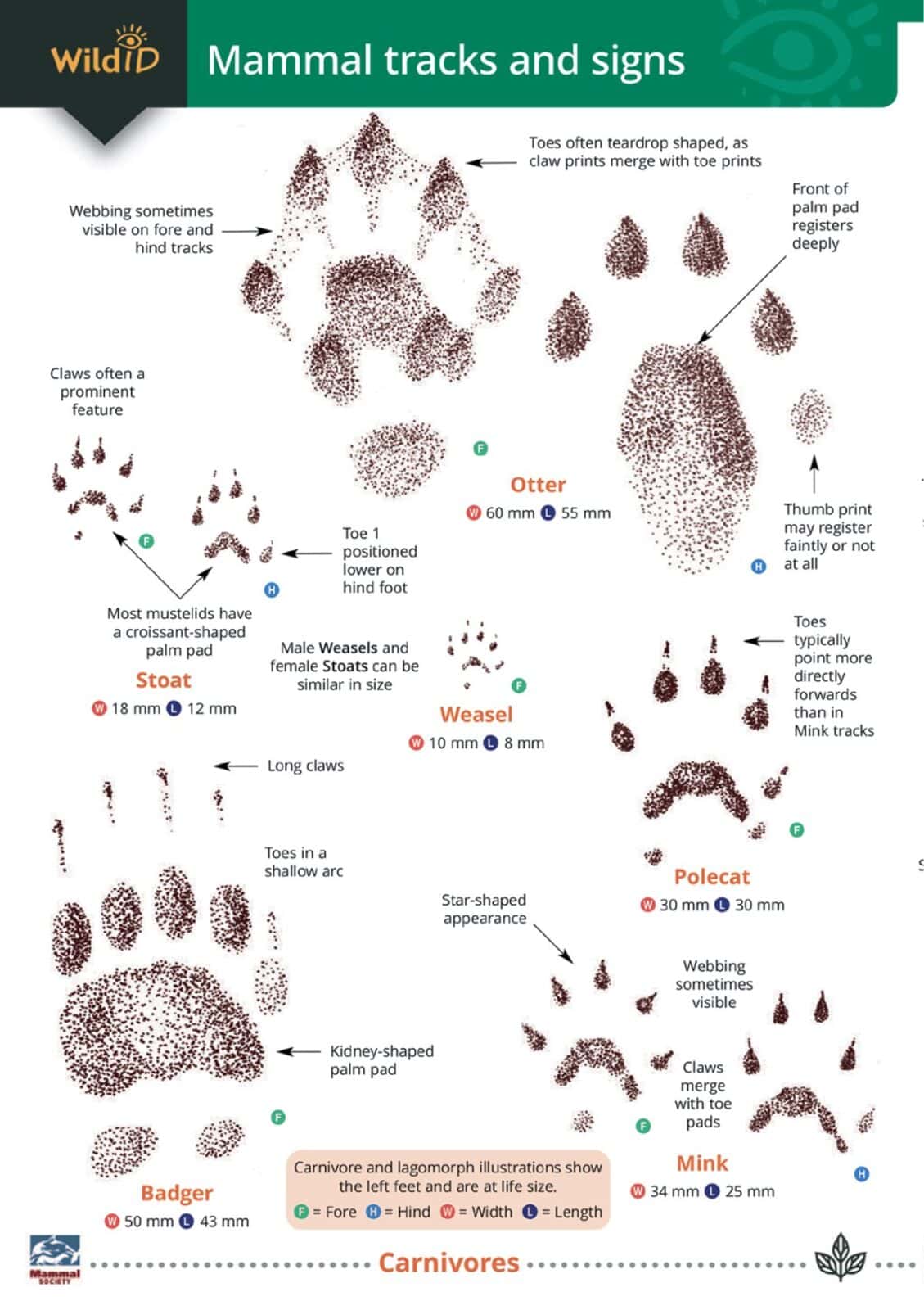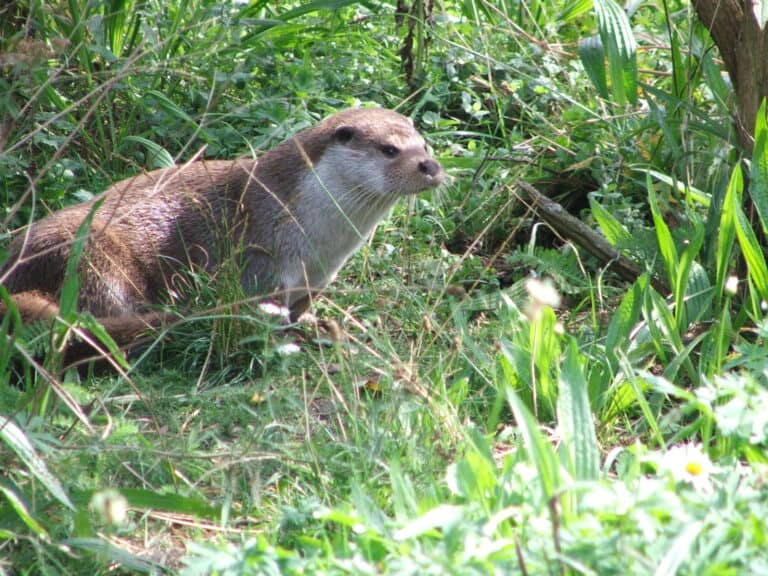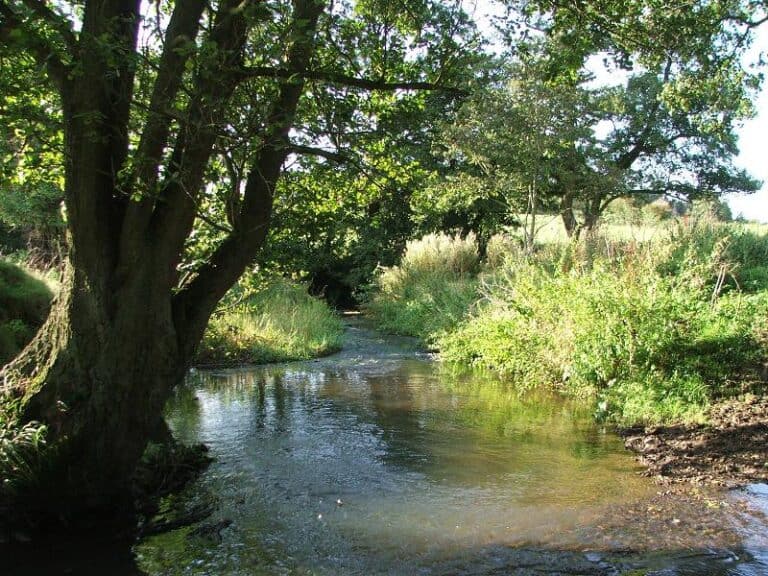Steve Docker is Resource Development Officer with Field Studies Council Publications. Here he provides a sneak preview of the latest WildID fold-out guide. It’s available for a special earlybird price of just £3 if ordered by 1 October 2023.
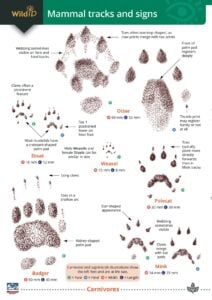
Finding the signs of wild mammals can be a fun and rewarding experience. When out and about I am always scanning the landscape looking for signs of their activities. I have studied and surveyed wild mammals for many years, in fact my very first Field Studies Council course was ‘The Otter’ in 2002, at Preston Montford in Shropshire. After years of monitoring this species I can rarely pass by a stream without carefully checking for the distinctive droppings, known as spraints, of the elusive Otter Lutra lutra.
But if you have never tried tracking before, where do you start?
The key thing is to just get out there and start looking. Areas of mud or sand are worth investigating. Probably the first tracks you will find will be those of dogs. Even though these aren’t as exciting as finding the tracks of wild animals, it is still worthwhile looking closely at them and getting familiar with what differentiates dogs from other mammals such as foxes. Then when you see something that is not a dog it will be more obvious.
There are almost sixty terrestrial wild mammal species to be found across Britain and Ireland. They range in size from the Red Deer Cervus elaphus (up to 275kg or three adult people!) to the Pygmy Shrew Sorex minutus (up to 5g, less than a twenty pence piece or three in a matchbox!). However, many of our species are difficult to see as they are cautious of people and are mostly active at night.
Signs of wild mammals
Fortunately, there are a range of signs that indicate the presence of wild mammals. These include droppings, tracks, food remains and shelters. Some of these signs are unique to a particular mammal species but sometimes more than one source of evidence may be needed.
Droppings, or scat, are one of the most obvious signs. They can be found in a variety of places including trails, fields and gardens. Tracks are another common sign and are most visible on mud, sand and snow. The muddy ruts left by a farm tractor are always worth checking. Food remains can sometimes be found. These include damaged plants, nuts and cones and prey remains such as bones, fur and feathers. Shelters, such as burrows and nests, are another good way to find wild mammals. They can often be found on the ground, in banks and in trees.
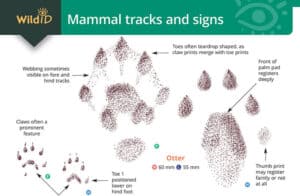
Interpreting wild mammal signs
Once you have found a mammal sign you need to be able to interpret it. This can be a challenge but to help with this, Dan Puplett has developed a new WildID guide, in partnership with the Mammal Society. Dan Puplett is an experienced tracker and environmental educator who has been leading courses in this area for many years.
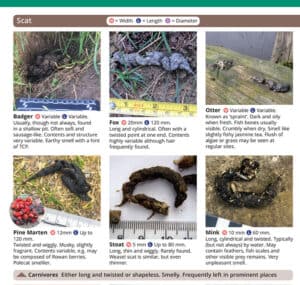
This is the latest identification resource to join the Field Studies Council’s extensive collection of publications. This fully updated new edition features new track drawings and photographs throughout. There is a wider range of mammals, including more livestock as well as more wild animals, including Eurasian Beaver Castor fiber. It also provides more detailed information about tracks and colour photographs of droppings, food remains, shelters and other signs instead of line drawings. Like other WildID guides, it is designed to be taken outside, so is laminated, rucksack-sized and lightweight.
It takes time and practice to be able to interpret wild mammal signs accurately. However, it is a great way to learn about the mammals in your area and if you wish, you can contribute to their conservation by submitting your records to a local Mammal Group or Biological Records Centre.
Find out more
Want to learn more about mammals and signs of their activity? Check out the wide range of Field Studies Council courses and the Mammal Society.
To help us all appreciate and enjoy biodiversity and better understand the changing state of nature the Field Studies Council has produced a wide range of high quality identification resources. In particular the WildID fold-out guides and Aids to Identification in Difficult Groups of Animals & Plants (AIDGAP). The WildID guide to Mammal tracks and signs (OP209) ISBN: 978 1 908819 86 4 is available from the FSC online shop.

